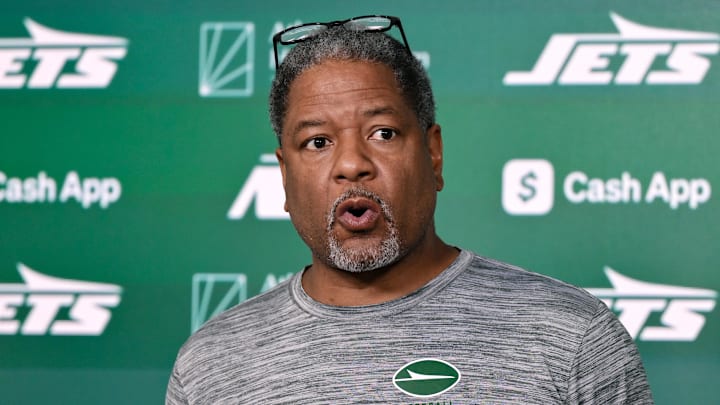The New York Jets defense continues to show signs of life, as they did in the team's 23-10 loss to the Baltimore Ravens, but the numbers behind their historic takeaway drought have reached an almost impossible level. The lack of takeaways has tanked what otherwise has been a respectable season for the Jets' defense.
The Jets are the only team in NFL history to reach their first 11 games without an interception. They still have just one takeaway total, the fewest for any team through 11 games in the Super Bowl era. The next closest teams — the 2024 Raiders and 2018 49ers — had five. It is wholly unprecedented.
And yet, underneath that historic drought is a defense that has actually been rock-solid snap to snap. Since Week 6, the Jets rank sixth in success rate allowed (41.1%), behind only Cleveland, Houston, Denver, Baltimore, and Seattle.
However, their EPA per play allowed in that timeframe sits at 23rd, revealing the truth that they win a ton of downs yet lose the plays that swing games. Explosive gains and the complete absence of takeaways are dragging everything down.
Some of this, especially the lack of takeaways, is bad luck, sure. But much of it points back to a predictable scheme under defensive coordinator Steve Wilks.
Steve Wilks could be the cause of the Jets' historic takeaway drought
Let's start with the luck part, because it is outrageous. Through 11 games, the Jets have recovered just 4 of 22 fumbles. That is 18%, easily the worst in the NFL. No other team is below 30%.
According to Michael Nania of Jets X Factor, it is the lowest rate recorded since at least 2003 — the previous record was 24%. We could put it in coin-flip terms: the odds of winning fewer than five out of 22 flips are 1 in 461. That is the level of absurdity we’re talking about.
But the bigger problems might be structural. The Jets run some of the most predictable blitz looks in football, and offenses are treating their pressure packages like they know the answers to the test.
They run man coverage 35.9% of the time when not blitzing, but that number jumps above 60% when they do blitz. That kind of disparity makes it easy for quarterbacks to diagnose the backend and get the ball out immediately.
It shows up most on third down. The Jets use the sixth-highest blitz rate on third down (42.2%) but rank dead last, 32nd in the NFL, in pressure rate on those blitzes (28.3%). Those failures are not random. That is schematic predictability meeting a limited pass rush.
Even outside of third down, the issues persist. The Jets blitz at the 14th-highest rate overall yet generate pressure on just 30.2% of blitzes, ranking 31st. You can blame personnel — and yes, they desperately need more pass-rush help — but vanilla pressure designs play a major role in why they cannot create chaos or finish plays.
This all explains the EPA gap. A defense that ranks sixth in success rate should rank far better in EPA per play allowed, but explosive plays and a complete absence of takeaways crater everything. The corners and linebackers have been solid. The run defense has been mostly good. The foundation is there.
What they lack is disruption. A playmaking safety. Real pass-rush juice. And a defensive coordinator willing to disguise pressure instead of announcing it. Until that changes, this group’s strong underlying metrics will remain buried under historic turnover futility.
And if said futility continues, the Jets may need to have a conversation about their defensive coordinator sooner rather than later.
